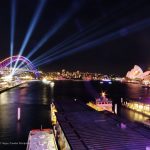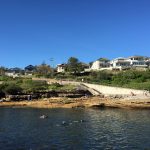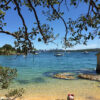Last Updated on: 25th April 2024, 10:40 am
In this guide:
• About Taronga Zoo Sydney (what, where and essential info)
• Practical planning tips and information
• How to get there
• How long to spend there
• Is it worth it + alternatives
Useful information about Taronga Zoo Sydney
Taronga Zoo has number of exhibits, among them the typical animals endemic to Australia – koalas, kangaroos, reptiles, plus mountain goats, giraffes, elephants, birds and more. If you want to see koalas and kangaroos in Sydney without leaving the city, this is the place to go. This location is child-friendly and perfect for a day trip with friends, family, or just yourself. You can easily spend a whole day here. Bring your own food to save money or eat at one of the on-site restaurants.
Taronga Zoo is open all year round, including Christmas and public holidays.
Entry Price:
Single adults: $51 when purchased on site, $45.90 when purchased online.
Children: 0-3, free. 4-15 years: $30 when purchased on site, $27 when purchased online
See here for all their entry fees.
Accessibility:
The zoo is located on a hill, with the main entrance at the top, and the ferry entrance at the bottom. You can take a bus to the top main entrance or enter at the bottom and sight-see your way up the hill in the zoo. Note: The Sky Safari cable car/gondola is not open at the moment. The terrain in the zoo is hilly in some areas, but are mostly paved and smooth, and there are ramps, so is wheel friendly, pram or wheelchairs, but it could be hard to push up some hills.
There are some lifts and escalators in areas where a ramp is not feasible. Most of the zoo is outdoors. The reptile exhibits and tiger exhibits are covered/indoors. There are some areas that are covered in sand or gravel near the deer exhibits. Most paths are quite wide, the gravel path was narrow but still accessible.
Visitors can hire a free manual wheelchair. Bookings recommended. See their website here for information.
Things to know
I last visited Taronga Zoo on July 16th 2015, and there has since been some changes. Pictures on this page were taken with my phone in 2015.
No more cash payments
Taronga Zoo, both Sydney and Dubbo, are completely cashless. This means they only accept card payments to purchase tickets and to pay for food, drinks and souvenirs in their retail shops.
Price changes
Single Adult tickets are now $51 if purchased in person at the zoo, up $5 from 2015, or $45.90 if purchased online (note, there are bank card fees online). A multi-visit Annual Pass (valid for 365 days) for a single adult is now $110, down $5 from $115, so is only worthwhile if you will go more than 3 times in a 365 day period. For detailed information on ticket prices, see here (opens new window).
Exhibits, Attractions and Facilities
Exhibits:
The Taronga Conservation Society Australia has two zoos, the Sydney one (Taronga Zoo Sydney), and Western Plains on in Dubbo (which is 400km and a good 5 hour drive from Sydney CBD). Sydney Taronga Zoo covers an area of 28 hectares, so can easily take up a full day although if you don’t intend on seeing the exhibits in detail, are fast, or are travelling without kids, you could do it in 3 hours. Exhibits at the Sydney Taronga Zoo include open air and enclosed exhibits of kangaroos, koalas, tigers, reptiles, birds, giraffes, elephants, deer, mountain goats and primates. See their list and a description of each animal here.
Unique Accommodation:
Apart from the animal exhibits, one can also stay overnight in one of their two accommodation options: hotels, or furnished tents. For information on their accommodation, see their webpage here.
Interactive animal encounters:
Taronga Zoo Sydney has a few animal encounter experiences on offer at an extra cost to the entry ticket. You can get up close to koalas, dingoes and giraffes, as well as feed penguins.
There are very limited tickets available (4 per day per encounter) and entry tickets for the zoo is required and a separate cost to the encounter experience. The tickets for the encounters are sold on site at the Top Plaza Shop (map reference 7L, see their map for details) so you should get there as early as possible.
Encounters are subject to weather and seasonal availabilities. Children must be 8 and over and be able to sit still during the demonstrations, and not all encounters are wheelchair friendly. See their website here for more information on all encounters on offer.
Live streaming:
Did you know that Taronga Zoo has live streams of some of their animal enclosures? Check out Taronga TV here.
Animals at Taronga Zoo
The exhibits, accessibility and what the grounds are like at Taronga Zoo
I, as I am sure like many others, thought the zoo is for native Australia animals, however this is not the case: there are a variety of exhibits, birds, giraffes, koalas, reptiles, tigers, elephants, a variety of terrestrial grazing animals including deer and mountain goats, all kept in enclosures. Taronga Zoo covers an area of 28 hectares with topography that can be steep in some places. The footpaths in the zoo are sealed bitumen pavements so is wheels friendly for strollers, prams and wheelchairs. The reptile exhibit, which is not very large, is indoors, the others are enclosures and exposed to the elements outside. Most exhibits (over 95%) is wheelchair accessible, and there are ramps and lifts throughout the zoo. For more information, see their website here.

Goanna



Snakes
Tortoise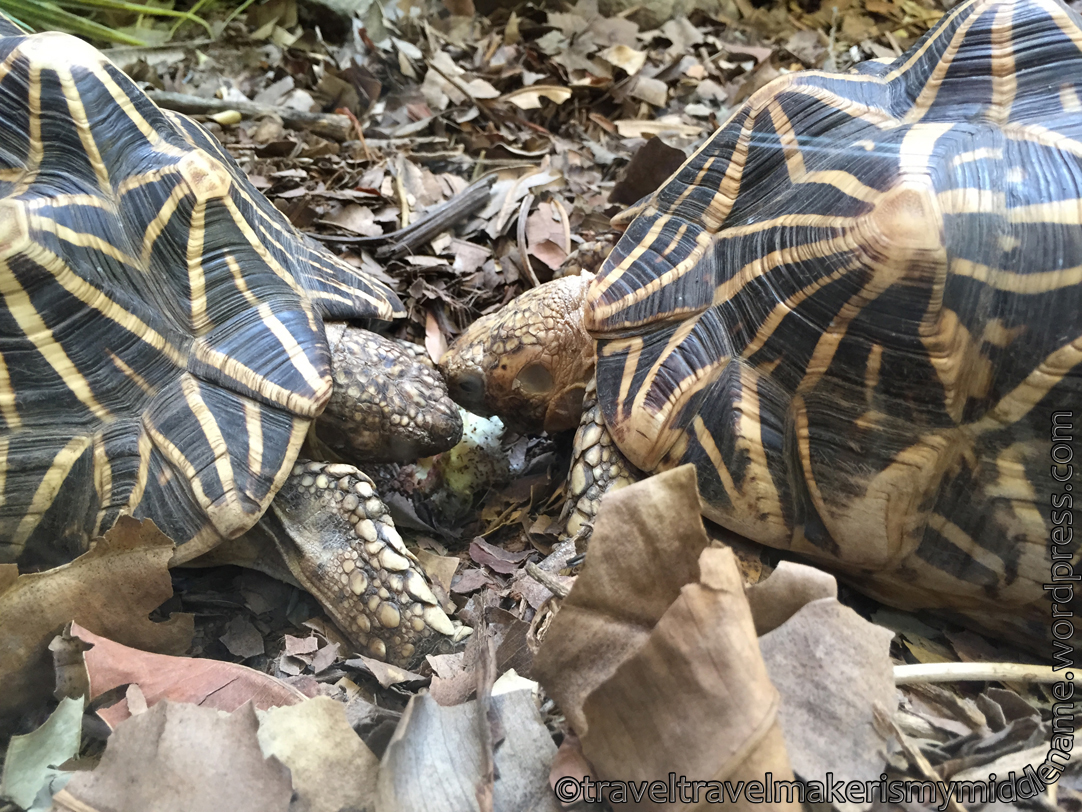


Birds

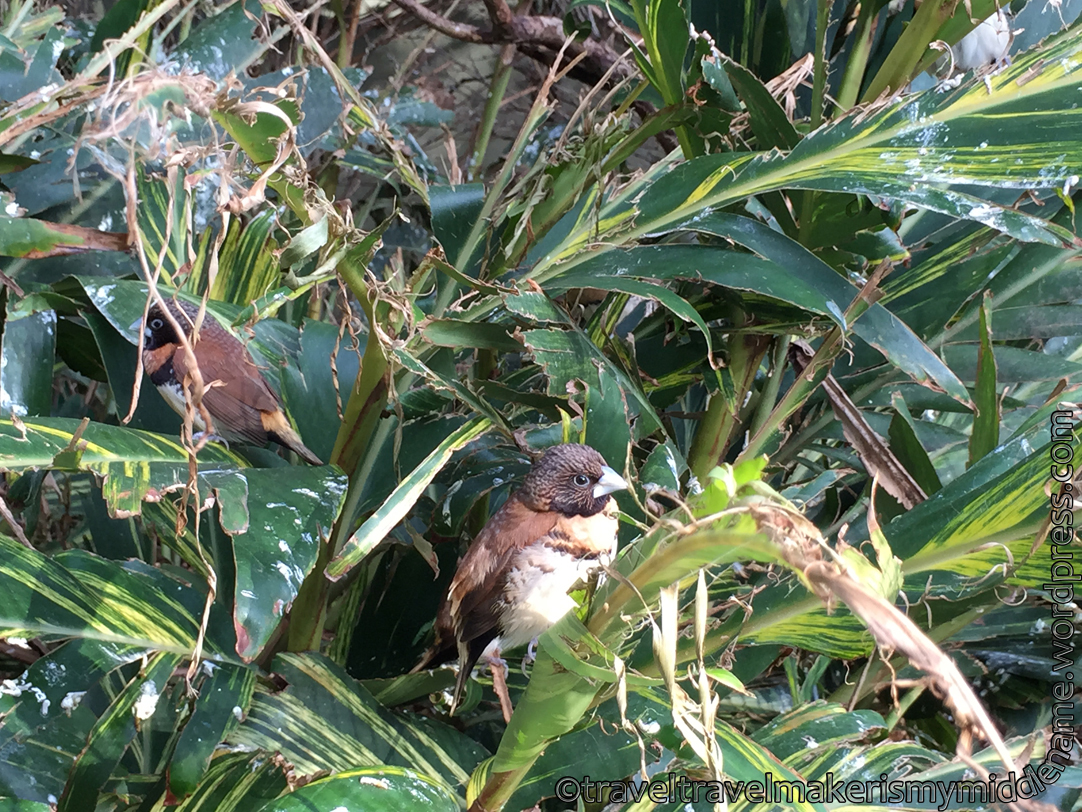
Mountain Goats
The mountain goats were very interesting to watch and is sure a source of amusement for children as they are able to jump very high to very small and hard to negotiate spaces and can even get back down from the most hard to reach places.
Other useful information
What days is Taronga Zoo open?
How long should you spend at Taronga Zoo?
Taronga zoo is a huge attraction, with around 28 hectares of ground to cover. The official website says to spend 3 hours, but realistically, you could expect to spend a whole day there, especially including lunch and rest time and if you are travelling with kids or want to see everything in detail and also do an encounter. If you only have one day, you should plan ahead by checking out their list of animals and their map beforehand to see what exhibits you want to see to make the most of your time. You can pick up a map on the day. The tickets do not have a time limit on them and is valid for the whole date, so to make the most of your day, you should aim to arrive when they open, so that you can stay the entire day if needed. Plan accordingly with your preferred method of transport, see below on how to get to Taronga Zoo Sydney.
Tip: Check the map beforehand and decide on how you want to get there, so that you don’t walk all the way to the bottom of the zoo and find out the exhibit you really wanted to see is all the way up the hill. See “Getting to Taronga Zoo Sydney” below on transport information.
If you intend on going more than twice in a 365 day period, you should consider getting a multi-visit pass, called a “Zoo Friend annual membership”.
Can you visit Taronga zoom when it is raining?
It rained in the morning the day I went, enough to need an umbrella but not too heavy, and stopped soon after. A few exhibits are indoors but most exhibits are outdoors, so whether or not rain would be a problem depends on how heavy the rain is. Taronga Zoo does not close due to rain (keep in mind any venue in general, and specific exhibits, may close due to extenuating circumstances, including wild weather).
Due to the outdoors nature of the exhibits, some places on the day even with some periodic rain near the deer exhibits were a bit muddy. Other areas are sealed pavements. The rain stopped later during the day but it would not be easy or fun to visit during active rain, as holding onto an umbrella and a camera and kids if you have any, would not be easy. When considering a visit in rainy weather, you should also remember that there are hiding places and shelter built into the exhibits of all animals, including outdoor animals so that even if you are willing to go during rainy weather, it is possible that the animals you intend to see may have gone to hide from the rain and you may not see them. However, light rain should not hinder a visit much, as during my visit, the animals soon came out after the rain stopped.
What Food and Drinks options are available?
There are restaurants and dining options there, with hot food, café style food, burgers, salad, and snacks like chips, drinks, ice cream and coffee, but it is expensive. You can save money by bringing your own food. Check out their food options here.
Facilities
There is free wifi at some spots in the zoo but they can be very slow and hard to connect.
There are very few places to sit and rest and limited places to refill water bottles. Toilets are available on site.
There are some good views of Sydney, although a little far away.
*Tips for Photographers*
Taronga Zoo Sydney has some almost unobstructed views of the Sydney skyline, although it is a bit far and the exact location (near the giaffe enclosure) will make it hard to set up a tripod as there is limited space to move around to get a better angle if needed. It is not worth the entry ticket just to access photography vantage points here, but feel free to bring a camera to take a few shots.

Just up the hill from the giraffe enclosure, near the aviary cage is a great place to take photos.

When you exit the cable car there is also a great place to take some scenic photos of Sydney. (Note: the cable car is not open at the moment).



Other locations

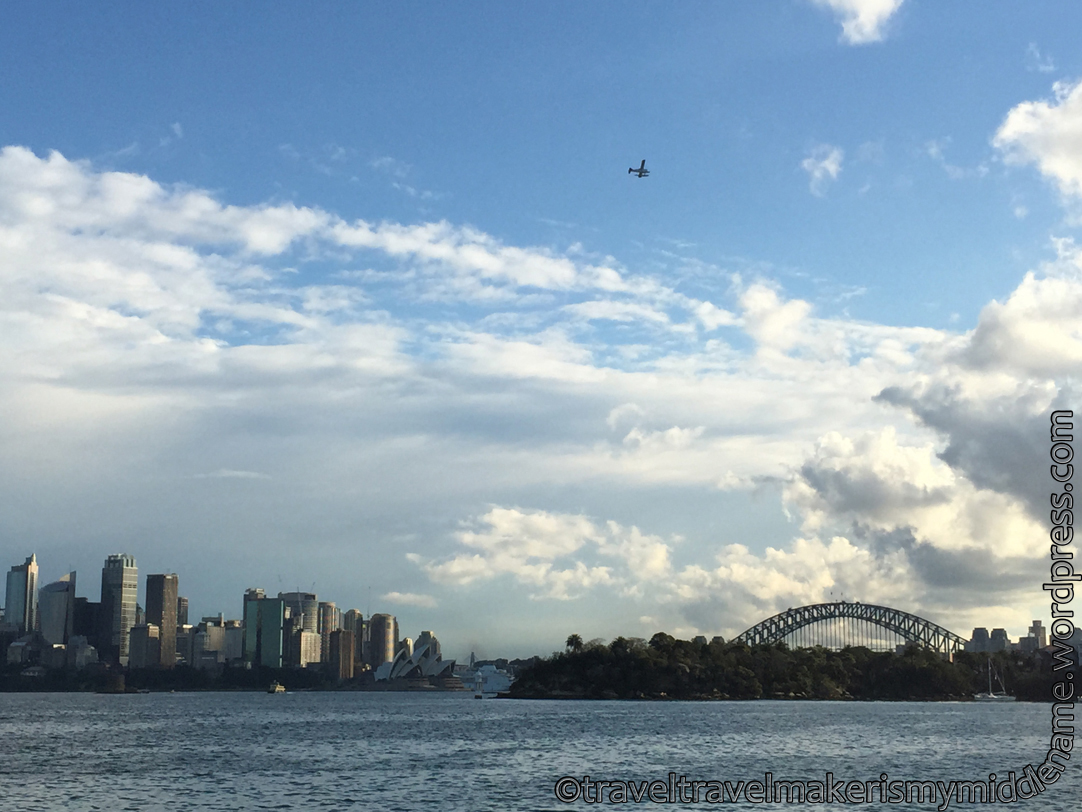


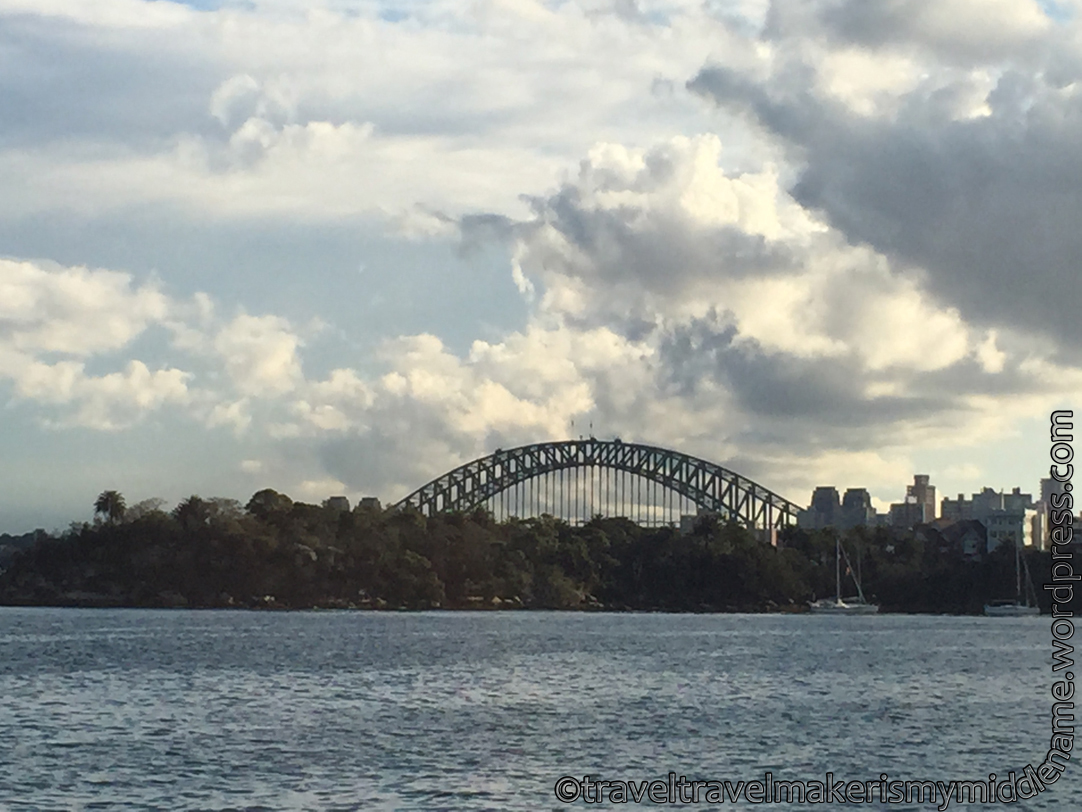




Getting to Taronga Zoo Sydney:
There are a few ways to get to the zoo. On the day I went, I went by bus in the morning then caught the ferry back in the afternoon.
If you are new to Sydney, you should get a plastic rechargeable electronic transport card called an Opal Card to use on trains, buses, light rail and ferries. You can find out more on the official website: opal.com.au. Note that while there is no fee for the card, there is a minimum recharge of $40 for an adult card when you first purchase a card, and a minimum of $20 per recharge at retailers and recharging machines at train stations. You can also use your own bank card that has contactless payment features to pay for each fare, but you will not receive the discounts for using the Opal card.
Driving
There is a covered, multi-storey carpark . It now costs $22, up from $17 in 2015, to park for the whole day. Entry and exit within 90 minutes is free if you want to drop off visitors. Surprisingly the zoo entrance is located near residential streets, so you may be able to find off-street parking. The best and cheapest way to get here if you have a lot of people would be by car because the parking cost is $22 for the whole day per car, whereas train plus bus or ferry tickets for a family on weekdays may cost more than $22.
Train
If you catch the train, you will need to change at Wynard Station or the Queen Victoria Building near Town Hall station for a bus. See ‘Bus” below for details.
Bus
Bus 247 between the Queen Victoria Building (QVB) and Taronga Zoo has now been replaced by bus 100.
Bus 100 is a loop bus, meaning it goes repeatedly between Sydney CBD and Taronga Zoo and back, so bus 100 always arrive on one side of the road. Get off at “Taronga Zoo, Bradleys Head Rd”. The bus arrives at the top of the hill and visitors can walk through the heritage gate.
Bus 100 runs between every 5 – 20 minutes (more frequently during day and peak times) and runs between 5:30am and midnight. Check the timetable on the official Transport NSW website here for exact times or plan your trip here using the bus stop names listed below and enter your destination as “Taronga Zoo, Bradleys Head Rd, Mosman”.
You can catch bus number 100 from the following bus stops in the CBD, in the order of arrival:
– “Wynard train station on York Street, (stand H)”
– “Queen Victoria Building near Town Hall Station”, “stand D” and “stand E”. Stand D is 30 meters from the Park Street exit/entrance of Town Hall train station (near Woolworths grocery store) and is on York Street, along the western side of Queen Victoria Building. Stand E is another 80 meters north on the same side of York Street, going away from Town Hall station. Click here to see how to walk from Town Hall station to Stand D and Stand E.
– “Clarence St at Council Pl”. This is just 190m from Stand E and 210m from Stand D and it is possible to run to this stop if you missed bus at the previous two stops and still make the same bus. See the Clarence St bus stop location and how to get there from stand D here.
– “Wynyard Station, Clarence St (Stand T)”. This stop is just 140m from Wynyard Station stand H on foot but a 9 minute bus ride, so it is very possible to get the same bus if you just missed the bus at stand Wynyard station stand H. Click here to see the location of stand T and the distance from stand H.
Ferry
If you are already site seeing in Circular Quay, ferry is a convenient way to get to Taronga Zoo.
Taronga Zoo is a 12 minute ferry ride from Circular Quay, and departs every 15 minutes usually from Wharf 4 or infrequently, Wharf 6. Get off at “Targona Zoo”. You can also catch the ferry back to Circular Quay from Taronga Zoo.
The Taronga Zoo Ferry wharf is undercover and at the bottom of the cable car service. The ferry wharf is located about 3 minute’s walk from the Lower Zoo Entrance (meaning you will need to walk uphill in the zoo). Bus 238 connect the ferry wharf, lower entrance on Athol Wharf Rd, and the main entrance on Bradleys Head. Bus 238 comes at irregular intervals of 28, then 2 minutes. Check the official Transport NSW website for the timetable here.
Sky Safari Cable Car – No longer operating – closed for upgrades
Sky Safari was a cable car that can bring you into or out of the actual zoo. To access it you need to catch a ferry to the zoo first. You can see it overhead from within the zoo. The sky safari is included in the cost of the entry ticket and can hold wheelchairs up to 610mm wide. The cable car service can be closed or limited at any time during bad weather or excess visitors. The Sky Safari cable car was first introduced in 1987 and the last one was introduced in 2000. It is now undergoing renovations to be upgraded so is not available at the moment.
Is Taronga Zoo Sydney worth visiting?
The entry price is undoubtedly high, and the zoo asks for further donations which I find is a little self serving. Personally I do not like zoos in general except where I go to see highly exotic animals, as I find zoos with general and common animals to be quite contrived and boring – it is no different to seeing a high resolution photos or videos of the same animals.
However, some people might like zoos and animals in general. Whether it is worth it for you depends on a few things.
Given that their organisation does animal conservation in Australia, I always thought the zoo is for native Australian animals, but this is not so. In fact, the majority of the animals in there are non-native Australian animals such as mountain goats, African lions and.Asian elephants Ultimately, yes you will be seeing native Australian animals, and the presence of non-native animals does not take away from the fact tat there are (albeit limited) native Australian animals.
Taronga Zoo is also located close enough to the city center (about a 30 minute bus ride from the Queen Viictoria Building near Town Hall station, give or take a few minutes) and easily accessed by public transport.
If you are travelling from overseas and seeing a koala or kangaroo is on your absolute must-do list and is the only reason compelling you to go to Taronga Zoo, you could consider going.
However, considering that there are other alternatives, if your only goal is to see a koala or a kangaroo (or any native Australian animal for that matter), I am inclined to say it is definitely not worth it. Taking in to consideration cost and location, Wildlife Sydney Zoo is a better alternative. It is a zoo of native Australian animals right in the city, 800m from the Queen Victoria Building on King St Wharf (near Darling Harbour) and the entry price for an adult is $48 online (or $50 in person). The zoo is smaller than Taronga zoo and indoors, but has many varieties of Australian native animals, apart from koalas and kangaroos, they also have womabts, platypus and cassowaries to name a few, and two to three hours would be sufficient. Featherdale Wildlife Park is another open air zoo with native Australian animals, including penguins, quokkas and dingoes, located about 40km from the Queen Victoria Building and tickets cost just $37.80 for an adult online, or $42 in person.
Tips for a visit to Taronga Zoo Sydney
You can bring your own food and drink to avoid paying unnecessarily high tourist prices for food.
The zoo is spread out over a sloped hill, so check the map and transport options to see where you want to start your visit and what you want to see before you go. This way you can know beforehand where the exhibits you want to see, are, so you don’t find out later that the exhibit you wanted to see is actually all the way up the hill, or arrive at the base and find out you need to walk up the hill. Use the TripView app or the official TransportNSW website to plan and check for track work and bus alterations.
©All rights reserved for all content and photographs, usage on 3rd party sites are forbidden
Related Posts
-
Vivid Sydney, 2017, Australia
Every winter since 2008 in Sydney, Australia, there is a 20-something days of colourful light…
-
Chinese New Year Lanterns 2017 in Sydney, Australia
Chinese New year is the biggest annual celebration in China, where millions of people make…
-
Clovelly Beach, Sydney
I visited Clovelly Beach on the 30th of December (which is summer for Australia) 2015, in…


